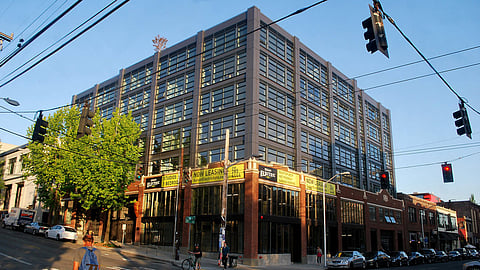Weekend Long Reads: What Drives the Cost of Housing?
by Kevin Schofield
This weekend's "long read" is a discussion of what happens to rental prices when developers build new market-rate housing.
There has been a raging debate the past several years among economists and housing experts on what happens when new market-rate housing is built in a neighborhood: Do rents in neighboring buildings go up, or do they go down? There are two schools of thought on this.
The "supply effect" camp believes that adding new market-rate housing causes prices to go down. This is for a number of reasons: First, the overall supply of housing is increasing, which decreases demand pressure on nearby housing. Second, the new market-rate housing makes the existing housing less attractive. Third, it leads to "migration chains," where people who want to stay in the neighborhood will move from older housing into the new housing; others might move up into the housing that was just vacated, and so on — eventually freeing up some of the less-attractive housing at discounted prices.
The "demand effect" camp argues that new market-rate housing causes rents to rise, also for multiple reasons: First, because it attracts wealthier tenants to the neighborhood and with them new amenities to serve them. Second, it sends a signal to other landlords that they should raise their rents.
Now it should be pointed out that these are not mutually exclusive: Both can, and likely do, happen at the same time. Then the question becomes, "Which one is the stronger effect?"
The folks at UCLA's Lewis Center for Regional Policy Studies have written a helpful survey paper that summarizes recent research on these questions. The research studies look at a number of locations, including San Francisco, New York City, Chicago, Minneapolis, and several cities in Germany. Overall their conclusions are similar: Building new market-rate housing drives neighboring prices down. They found some evidence for demand effects but much stronger supply effects.
But there are some important caveats to the findings, as the context for a new market-rate housing project is important. A project that tears down existing housing and replaces it with new market-rate housing is less likely to push down rents, unless the replacement is a significantly larger project that adds substantially to the overall supply of housing units. This is especially true if the new project is replacing affordable housing — perhaps the worst case for gentrification of a neighborhood.
The paper also reminds us that gentrification can still happen without new development; or to put it another way, preventing development doesn't prevent change in a neighborhood. Buildings will still get renovated, amenities may still move in, wealthier tenants may still move in. In fact, it suggests that in some cases preventing development altogether may exacerbate gentrification by increasing pressure for landlords to raise prices by limiting the housing supply.
If the research is indeed right and increasing the housing supply — even with market-rate and so-called "luxury" housing — is key to stabilizing housing prices, that has important public policy implications. It suggests that "upzoning" of neighborhoods should be done in ways that encourage development (and redevelopment) that builds more housing — more than is torn down in the process. But it also points out the importance of public housing projects as a complement to private investment, to supplement the housing supply and ensure that the overall count of units goes up.
Here are links to the other research studies that the above survey paper references:
Kevin Schofield is a freelance writer and publishes Seattle Paper Trail. Previously he worked for Microsoft, published Seattle City Council Insight, co-hosted the "Seattle News, Views and Brews" podcast, and raised two daughters as a single dad. He serves on the Board of Directors of Woodland Park Zoo, where he also volunteers.
Before you move on to the next story …
The South Seattle Emerald™ is brought to you by Rainmakers. Rainmakers give recurring gifts at any amount. With around 1,000 Rainmakers, the Emerald™ is truly community-driven local media. Help us keep BIPOC-led media free and accessible.
If just half of our readers signed up to give $6 a month, we wouldn't have to fundraise for the rest of the year. Small amounts make a difference.
We cannot do this work without you. Become a Rainmaker today!
Help keep BIPOC-led, community-powered journalism free — become a Rainmaker today.


